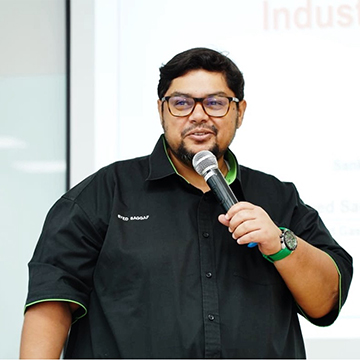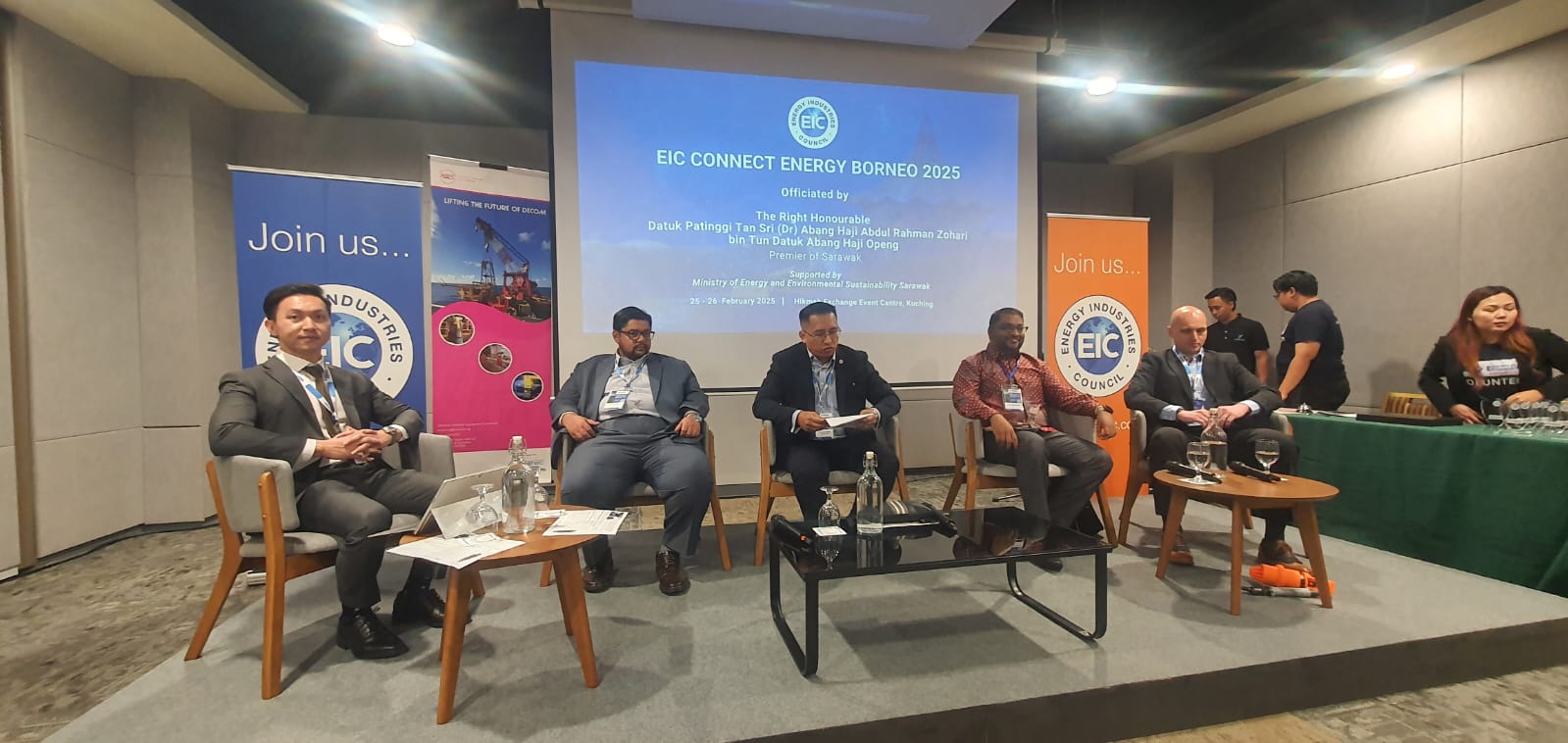Hosted at EIC Connect Energy Borneo on 25–26 February 2025, the session was steered by panel chair Willie Ho, CEO of Ocean Vantage. Kicking things off, he noted, “offshore decommissioning has never been more relevant today…this sector is poised for a major wave of GROWTH, driven by regulatory changes, maturing fields and increasing emphasis on environmental sustainability” . He outlined the five pillars of the discussion: regulatory clarity, technology, skills and capacity building, collaboration, and financing. Joining him were four distinguished panelists who each brought a unique vantage point on the challenges and opportunities ahead:
- Ts. Syed Saggaf Syed Ahmad, President of the Malaysian Oil, Gas and Energy Services Council (MOGSC), who has led a decade-long industry-regulator dialogue on equitable contracting and local capability mapping.
- Nhakhorn Somchit, Vice President QHSE at Sapura Energy Berhad, whose team has executed Malaysia’s first jacket removal and driven a 97% recycling target for decommissioned steel.
- Vijay Thiruchelvam, Asia–Pacific (APAC) Regional Business Development Director at Kent, who shared insights from Kent’s framework-based engineering solutions applied from the North Sea to APAC waters.
- Jon Jackson, Engineering Director at Balltec Ltd., whose rapid-connect mechanical systems are slashing vessel-time and welding risks on decommissioning and offshore-wind projects alike.

Syed Ahmad (MOGSC)
Regulatory Collaboration
- Works closely with Petronas’s Malaysia Petroleum Management (MPM) unit to champion four pillars: market liquidity, equitable contracting, local champions, and sustainability.
- Celebrated Petronas’s keynote endorsement of “equitable contracting,” a mechanism MOGSC helped introduce.
Outlook
- Notes a lull in removals for 2025 but forecasts 24 structures slated for removal from 2026 onwards – “what we’ve been waiting for.”
- Emphasizes the need for fair, campaign-based contracts to enable long-term planning and resource allocation.

Nhakhorn Somchit (Sapura Energy)
HSE & Legislative Challenges
- Regional divergence:
- Malaysia allows in-situ cleaning or partial abandonment under the Environmental Quality Act.
- Thailand mandates 100% removal and on-land disposal.
- Australia requires vessel-level abandonment oversight by National Offshore Petroleum Safety and Environmental Management Authority (NOPSEMA), but lacks domestic land-disposal capacity – forcing shipments to Europe, greatly increasing cost.
- Hazardous waste: While up to 97% of steel can be recycled, the remaining mercury and NORM (Naturally Occurring Radioactive Materials) demand specialized handling and facilities.

Vijay Thiruchelvam (Kent)
Engineering Challenges
- Asset Complexity: Platforms, subsea trees, pipelines, risers and umbilicals each demand tailored strategies – “one size doesn’t fit all.”
- Hazardous Materials: Volatile Organic Compounds (VOCs), arsenic, mercury and seabed-bound sediments require in-depth environmental impact assessments.
- Aging Infrastructure: Assets 40–50 years old demand rigorous structural integrity analyses, informed by deep-water and jacket assessments.
- Unknowns: Hidden conditions necessitate contingency plans – drop-object and lifting analyses to prevent incidents before they become environmental disasters.
Global Insights
- Kent’s framework approach – tested in the Gulf of Mexico, North Sea Transition Authority, and Australian authorities – can be adapted for APAC, balancing regulatory compliance with asset integrity.

Jon Jackson (Balltec)
Execution Challenges in South East Asia (SEA)
- Compressed timelines: Whereas North Sea vessels are booked two years ahead, Southeast Asian campaigns sometimes allow as little as 16 weeks from inquiry to delivery – forcing reliance on stocked tools designed for occasional use.
- Regional variance: Thailand’s requirements differ from Malaysia’s and Indonesia’s, necessitating local partnerships e.g., Alliance Sealand Engineering Solutions (ASES) to position tools and personnel effectively.
Innovation & Safety
- Traditional pad-eye welding can take up to seven vessel days per lift point; Balltec’s connectors can engage or release in 60 seconds, eliminating high-risk welding and slashing vessel time.
Key Takeaways
- Regulatory & Financial Clarity remains the linchpin for Asia’s growing decommissioning wave.
- Technological Innovation – from robotic inspections to rapid-connect tools – will streamline high-risk operations.
- Local Capacity Building: Developing regional yards, disposal facilities and talent frameworks is critical to sustain momentum.
- Equitable Contracting: Structuring campaign-based, volume-driven contracts with cost-rebase mechanisms ensures fair risk-sharing.
- Sustainability Focus: Pushing beyond mere removal to maximize recycling (up to 97%) and responsibly manage hazardous residues.
As decommissioning in Asia ramps up, close collaboration among service providers, operators and regulators – anchored by transparent contracts and cutting-edge technology – will determine how efficiently, safely and sustainably the region’s aging infrastructure is retired.


